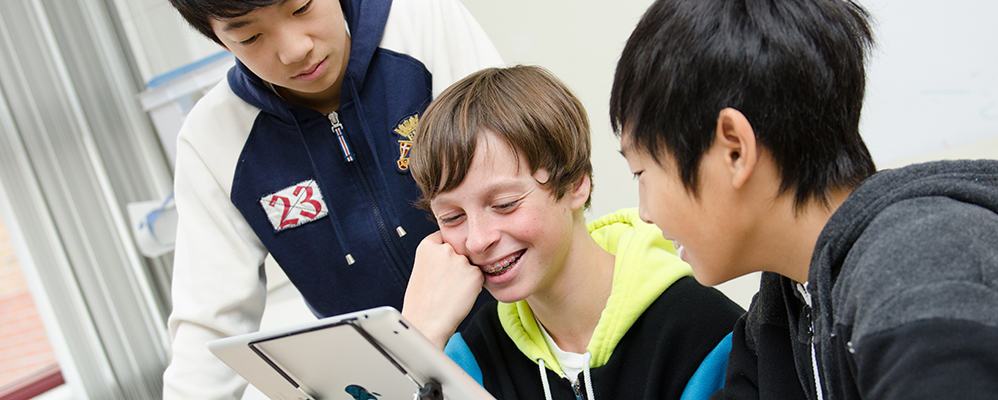Science and Technology Learning


What do students learn from
science and technology learning?
Learning Story
Students explore, identify and assess during science and technology play-based learning. They inquire, hypothesize, record and conclude their findings to build knowledge.
Children specialize in why and how questions. “Why did my ice cream melt?” “How does it snow?” They are natural-born scientists who conduct little experiments each and every day. When children ask questions they are improving their powers of observation, reasoning and prediction while generating excitement about discovery. And just like scientists, children learn from their successes and failures.
Children are drawn to technology such as computers, computer games and robotic toys. Already a dominant feature of modern life, technology’s role will only become more expansive in the years to come. Research shows that computers can benefit children’s learning and development. The challenge is to ensure that children are not passive users of technology but learn how to use it creatively and how to design and master it.
Today, digital media literacy requires a more advanced knowledge of a larger variety of technological resources than ever before. Video game playing can be used to support the development of new literacy skills. In addition, the development and design of digital games in the classroom can enhance programming skills, information-technology competences and critical thinking strategies.
Science and technology play engages the player in observing, comparing and exploring all of which are foundational processes of scientific learning. Playful learning experiences encourage students to engage in scientific inquiry and discovery. The open-ended nature of play catalyzes and supports vigorous hypothesis testing, leading students to build their scientific understandings. Experimenting hands-on with objects and materials that move, including one’s own body, encourages the construction of physical knowledge and supports the combination of ideas and results in theory building. Important understanding occurs as students combine and construct with materials. Outdoor play can foster environmental values in junior and intermediate students, while playing around with motion of the human body can help students develop an understanding of basic biology related to musculature and the nervous system.
Although it did not necessarily fit into the specific curriculum expectations for science and technology for my grade, I wanted to make sure that my students had access to the more complex Lego sets that included robotics. I wanted all students to have equitable access to the material. I could not use it as a reward for those students who completed their assignments early. This would have had students finishing quickly but not thoroughly. Moreover, students who were challenged academically might never access the materials and it would give the impression that the task was a treat rather than an academically challenging activity. That said, some students were truly not interested.
Although it was a challenge, I worked out a schedule over a three-week period that allowed all interested students an extended period of time to explore the material and create interesting products. The students were always asked to explain their thinking to the class and to show how they created their structure and overcame challenges.
Additionally, we had a corner of the classroom set aside for technology. This area included such material as old toasters, clocks, watches, kettles, radios and more which the students could take apart and examine. Friends, staff members and parents knew this was an important corner of the classroom and were generous in contributing material.
Doug is a student with a significant learning difficulty who has great difficulty reading and writing and often suffers poor self-esteem and anger management issues. One day, the principal, Mrs. B., was in the hallway trying to fix a lock that she could not open on the trophy cabinet. Doug asked if she wanted help and she looked a little shocked that he thought he might be able to assist. Doug took one look, identified the solution and fixed the lock. Mrs. B. was an academic while Doug likes to spend his time taking things apart and putting them back together again. His strength was not in the standard academic areas but his experiences allowed him to visualize and solve complex technological problems. Doug’s status in the eyes of Mrs B rose greatly that day.



